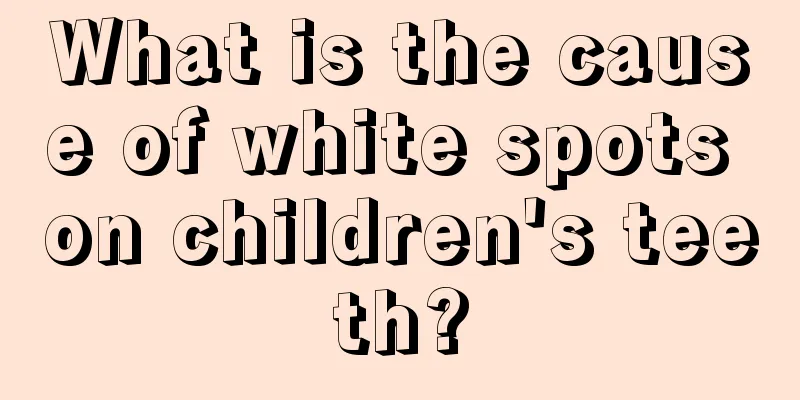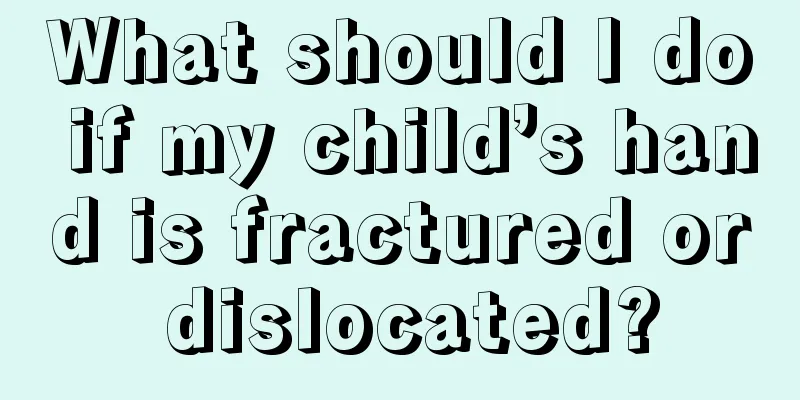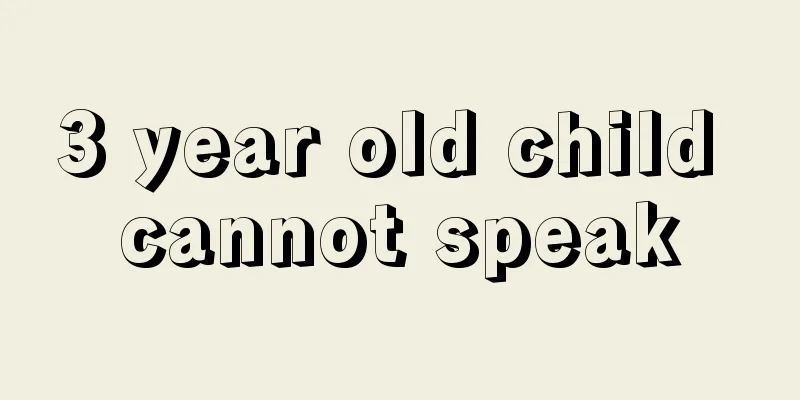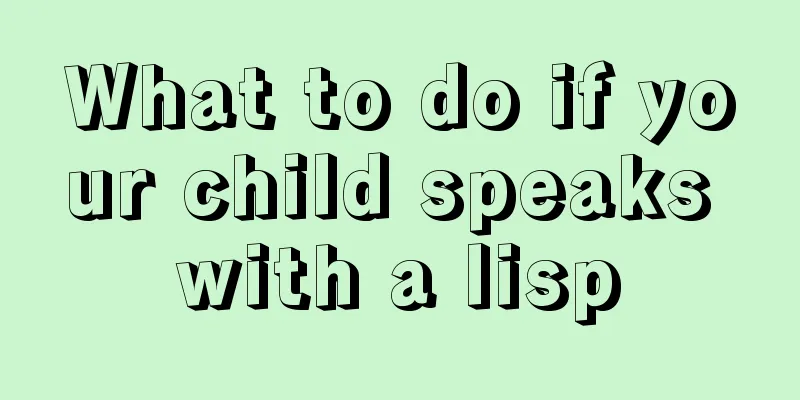What to do if your child has a bleeding nose
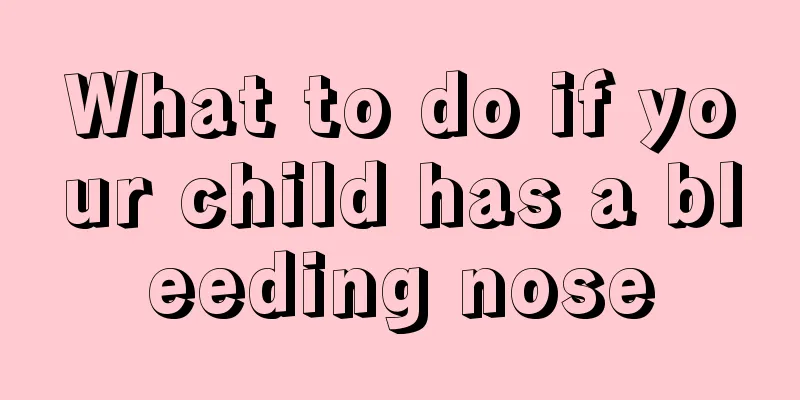
|
In order to develop children's sensory abilities and communication skills, many parents choose to consciously let their children play with friends from an early age. It's really crazy when kids play together. Plus there are so many toys, they sometimes fall or bump into things accidentally. Parents must remember to deal with the injury promptly after it occurs, especially when it is serious, such as when a child’s nose bleeds. What should we do then? 1. Avoid panic. Children are still young and are often at a loss when bleeding occurs suddenly. At this time, parents should first stay calm and guide their children to take slow and deep breaths to fully relax. 2. Avoid lying on your back . Do not place your child on his back if he has a nosebleed. Because when lying on your back, blood will flow from the posterior wall of the pharynx into the esophagus and stomach, and will soon be vomited out from the stomach, which covers up the truth of the nosebleed. Let the child take a sitting or semi-sitting position, and pay attention to keeping the airway open to prevent blood from flowing into the mouth through the posterior nasal cavity. Instruct the child to spit out the blood that flows into the mouth as much as possible to prevent the blood from irritating the gastrointestinal tract and causing nausea and vomiting after being swallowed, or the child from accidentally inhaling it into the respiratory tract and causing suffocation. 3. Avoid using paper rolls or cotton to stuff things in. Not only will this fail to stop bleeding, but unclean paper rolls and cotton will cause inflammation. 4. Press the nose wings tightly. Parents should use the second knuckles of the thumb and index finger to press tightly on both sides of the child's nostrils, because children's nose bleeding is usually in the front part of the nasal septum, and pressing both sides of the nostrils can usually stop the bleeding. In addition, you can apply a cold towel to the child's forehead to help stop the bleeding. Even if the nose bleeding stops, you should go to the hospital for examination to rule out blood system diseases first. If the bleeding is caused by rupture of the nasal mucosa and small blood vessels are exposed, it can be treated in time to avoid further bleeding. What causes nose bleeding in children? 1. Acute febrile infectious diseases: In childhood, some infectious diseases with rapid onset and high fever often occur, especially upper respiratory tract infections. When high fever occurs, the blood vessels of the skin and mucous membranes throughout the body become congested and swollen, and the nasal mucosa also undergoes such pathological changes. Acute congestion and swelling of the nasal mucosa are more likely to cause rupture and bleeding, because the blood vessels of the nasal mucosa are superficial. Once the fever is severe, coupled with the external force of blowing the nose hard, the blood vessels under the mucosa will rupture and bleed. 2. Trauma: The nose is an organ exposed on the body surface. Once trauma occurs, such as blows or falls, the nose will naturally be the first to be affected. Under the impact of severe trauma, the blood vessels under the mucosa will rupture and bleed. 3. Picking the nose: Strictly speaking, picking the nose should also be included in the scope of trauma. Out of curiosity and discomfort, children often like to use their fingers to dig blindly in their nasal cavity. This is a bad habit that is not only unhygienic but also easily causes local nasal mucosal bleeding. The place where people usually pick their nose is at the front and lower part of the nasal septum. There are many blood vessels in this area, and many tiny blood vessels are interwoven into a network like a spider web. The blood vessels are superficial and very thin, and are located at the opening of the nasal cavity. Just digging with your hands can break the blood vessels. More than 90% of nosebleeds in children occur here. 4. Foreign objects in the nasal cavity: Normally, there is nothing blocking the nasal cavity except some nasal secretions, allowing breathing to be free and unobstructed. But sometimes, children like to put some small objects into their nasal cavity for fun, such as peanut kernels, melon seeds, fruit cores, soybeans, plastic paper, small metal toys, etc. Once these objects are stuck in the nose and become foreign bodies, the child cannot take them out by himself and dare not make any noise. Over time, they are forgotten and remain in the nasal cavity. Some foreign objects swell and mold when they come into contact with water in the nasal cavity, causing infection, erosion and bleeding of the nasal mucosa. Sometimes, due to the adverse stimulation of foreign objects, the nasal mucosa may also cause traumatic bleeding. 5. Hematological diseases: You should know that the blood in the human body's blood vessels must neither bleed nor coagulate, which is entirely determined by some special factors in the blood. If under the influence of certain factors, some factors in the blood will undergo a series of changes, making it difficult for blood vessels and blood to coagulate after bleeding occurs. These diseases include leukemia, hemophilia, thrombocytopenic purpura, aplastic anemia, etc., collectively known as blood glass. This is the direct cause of nosebleeds in children, and can cause repeated and heavy bleeding. |
<<: Is it serious if a child has a nose bleed?
>>: Tips for children to sleep in separate rooms
Recommend
What should I do if my 1-year-old baby has a viral infection and fever?
Because the baby is still very young, the functio...
Taking diarrhea milk powder still causes diarrhea
Many people do not understand what diarrhea milk ...
The baby keeps moving his hands and feet
The baby's physical health is very important,...
If your baby has vertical lines on his nails, be careful because these are the signs
A normal baby's nails should be pink and tend...
Symptoms of precocious puberty in boys
With the gradual improvement of living standards,...
Does Fengyoujing have any effect on babies?
Fengyoujing is often used in our daily life, espe...
Children's nosebleeds in hot weather
As the weather changes, the human body changes wi...
Characteristics of children's growth and development
We all know that before adulthood our bodies are ...
The child has a white peak
The healthy growth of children is very important....
Baby's nasal discharge is sticky like glue
Many parents wonder why their baby's snot is ...
Is it really okay for a three-year-old baby to take a bath every day?
When taking care of their babies, many parents st...
What should I do if my child is allergic to an injection?
In order to prevent children from being plagued b...
What should primary school students eat to nourish their brains?
We know that a year's plan starts with spring...
How to deal with a child having a fever at night?
Many children often have a fever in the middle of...
What to do if your baby has hernia in one month
Hernia is a common disease in our lives, and chil...

